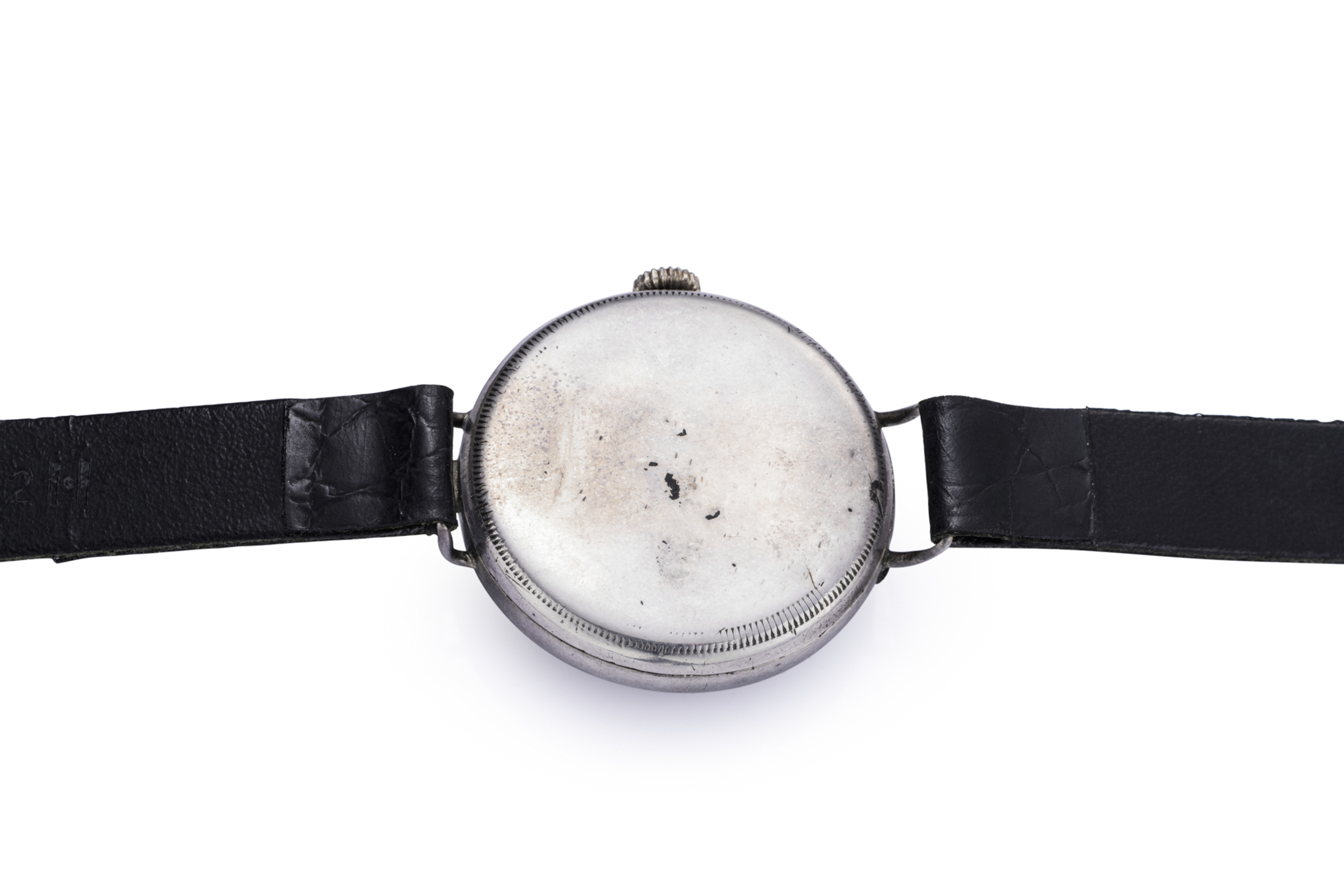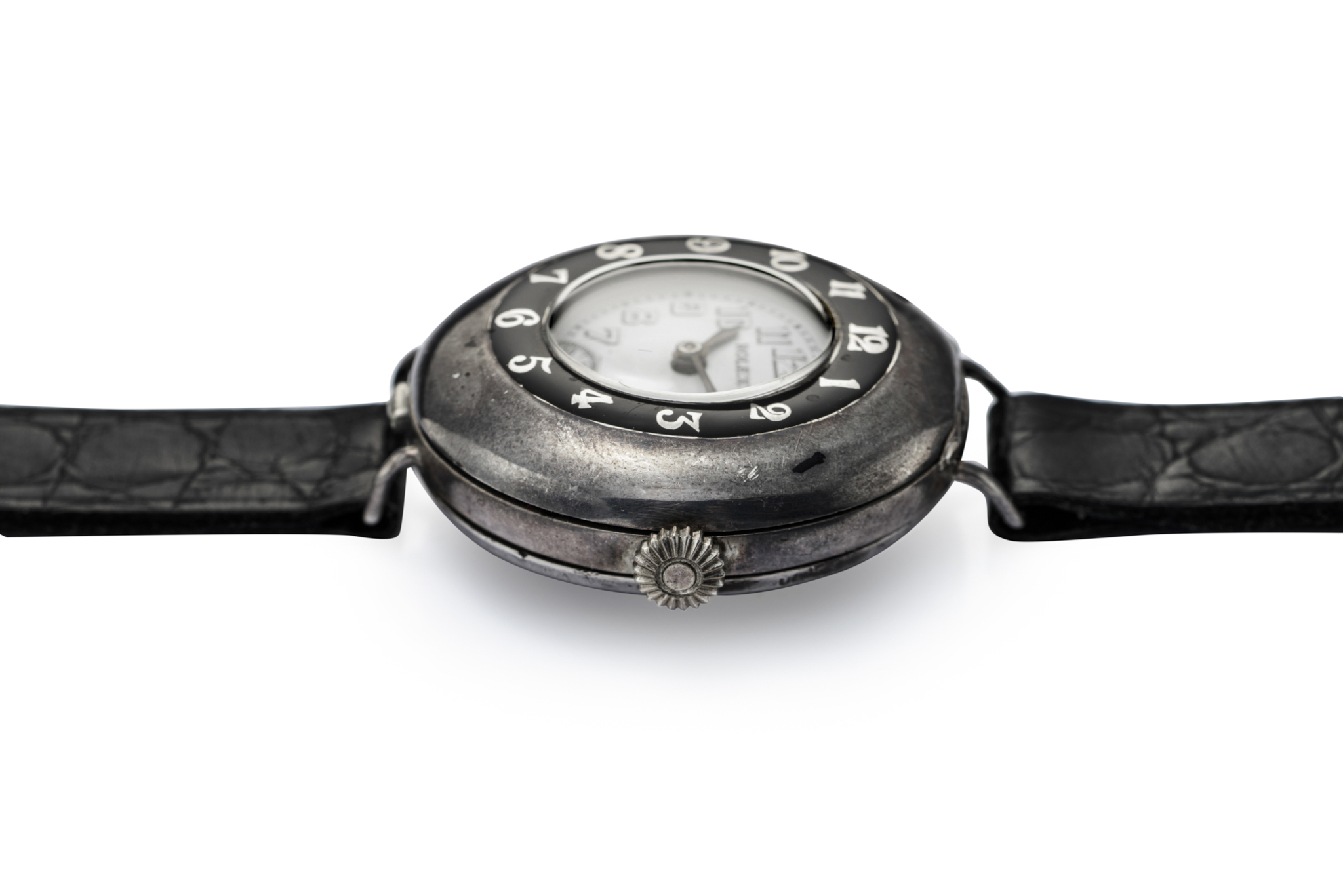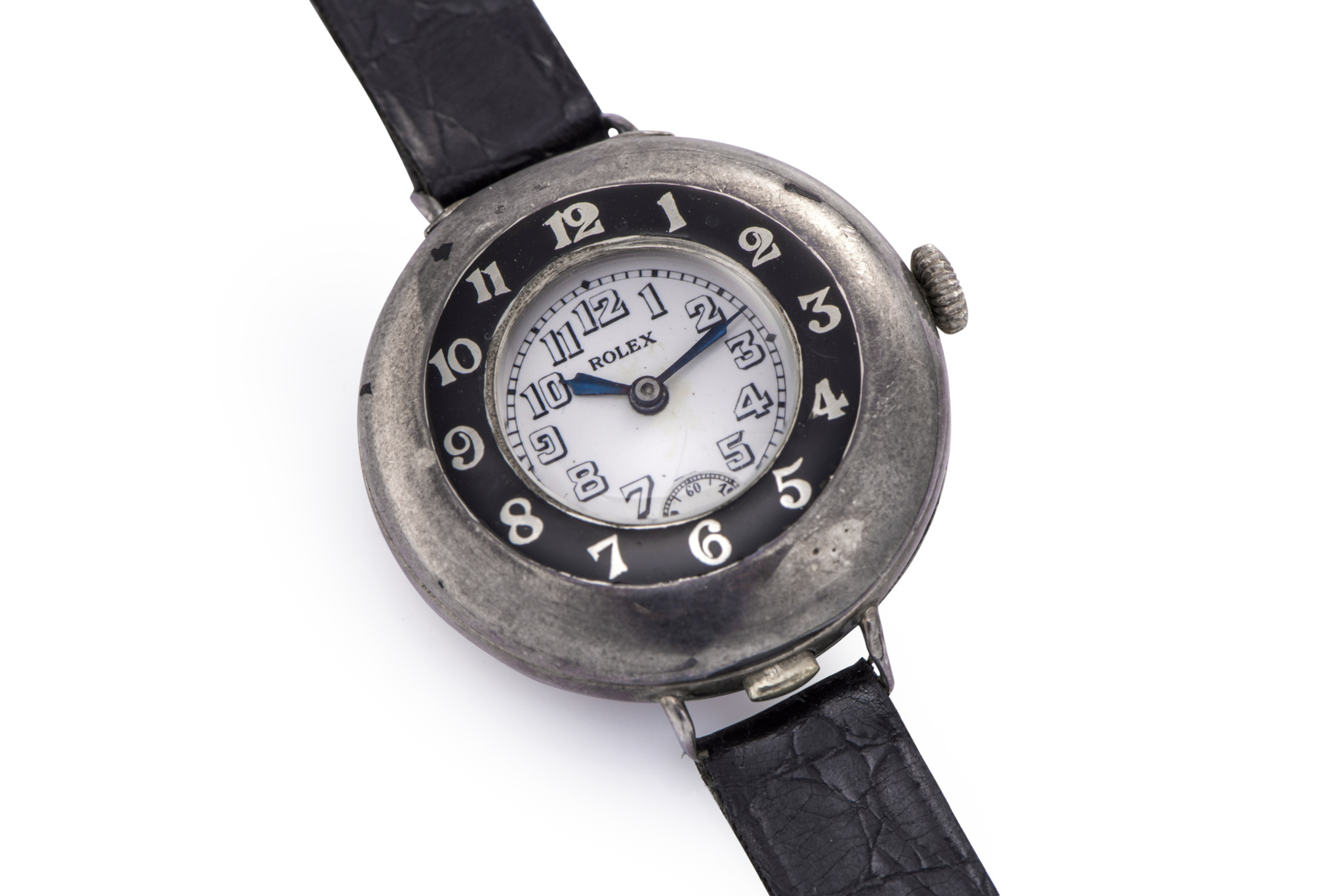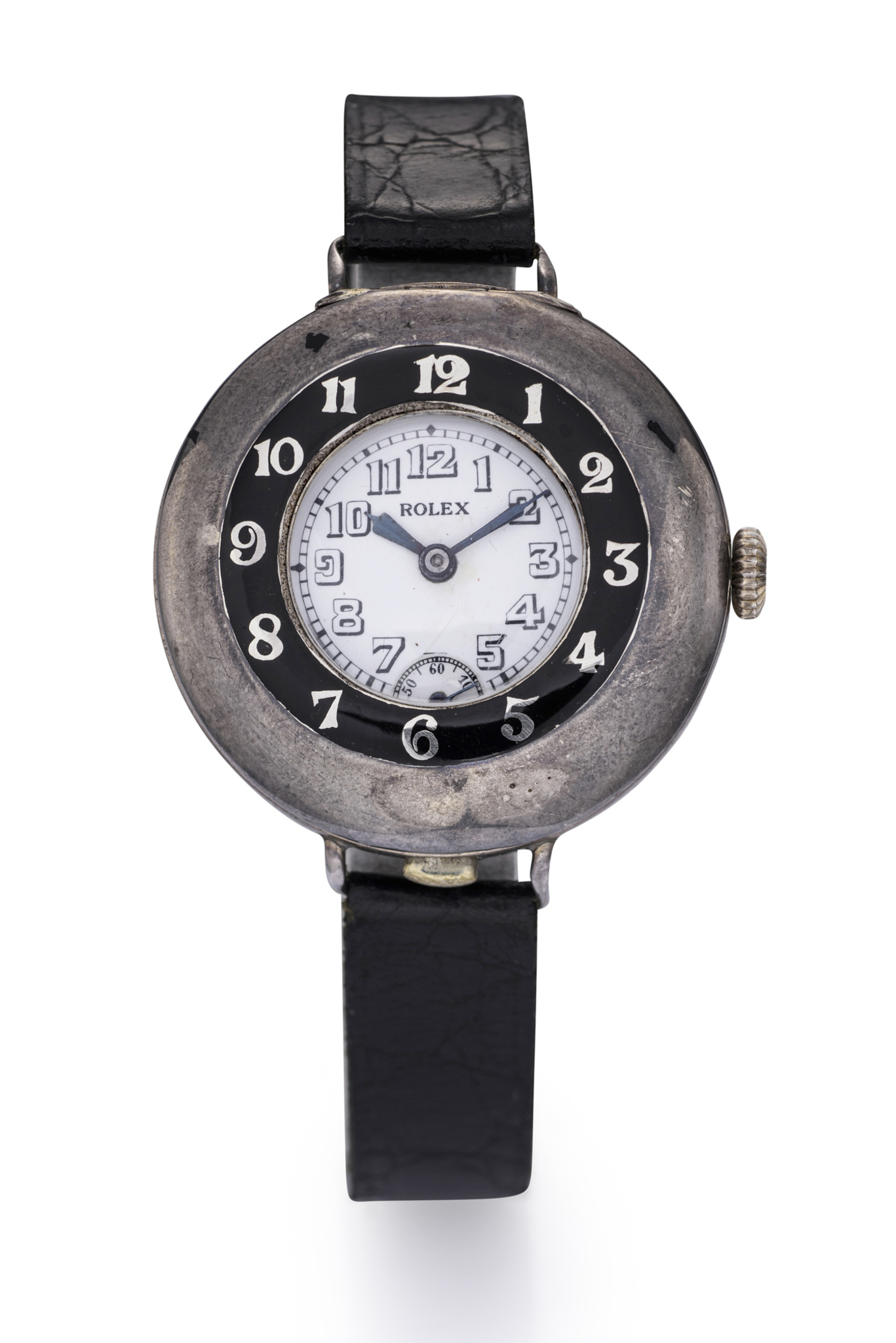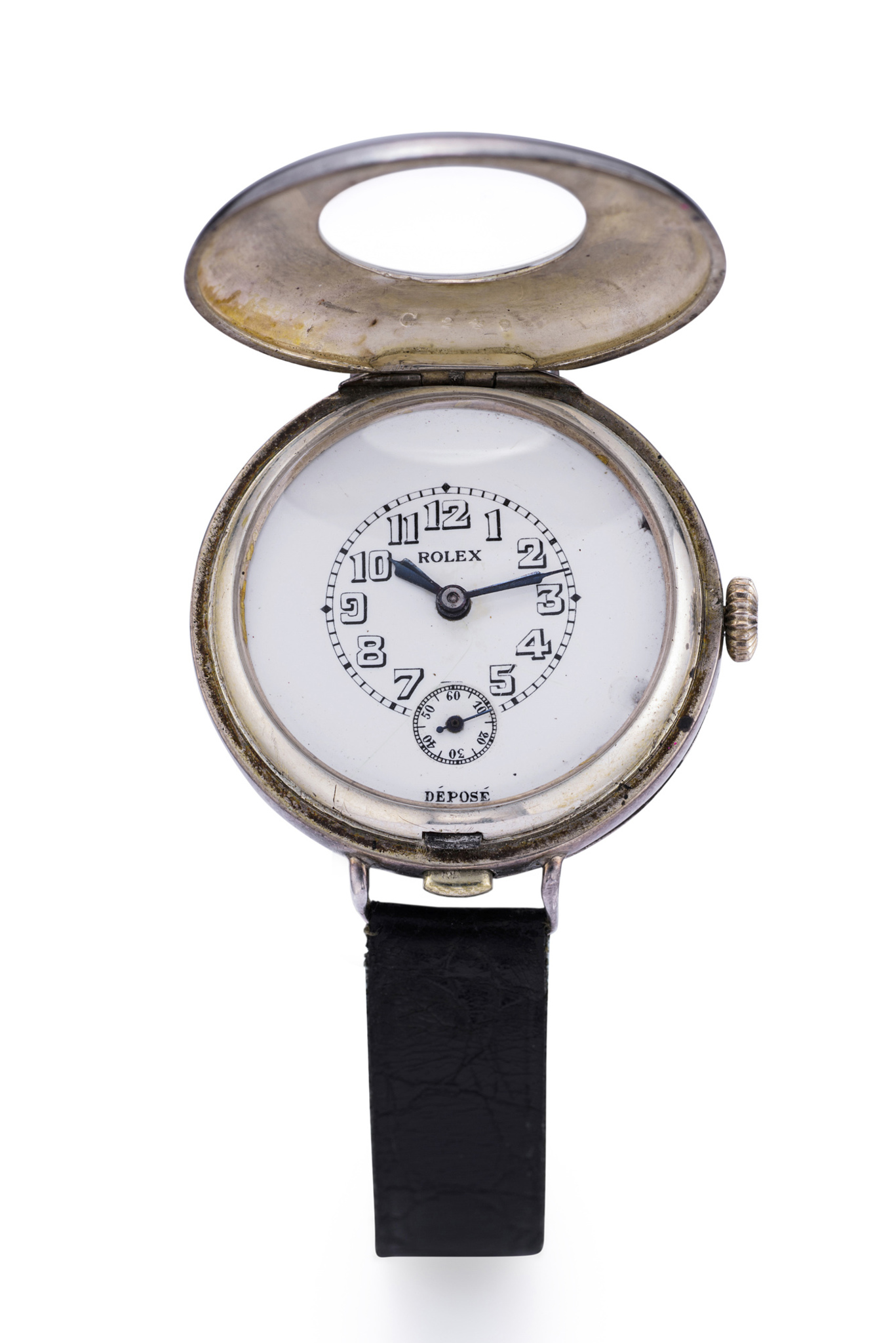Important Modern & Vintage Timepieces.
Hong Kong, Dec 12, 2018
LOT 249
ROLEX EARLY "OFFICER" WRISTWATCH
HKD 12,000 - 15,000
USD 1,500 - 1,900 / EUR 1,300 - 1,700
Silver (0.925 sterling) and enamel, half hunting-case, manual-winding, round-shaped, "Officier" gentleman's wristwatch, screwed case-back, subsidiary seconds at 6 Case based on the Swiss invention patent No. 71 363, delivered on June 23, 1915, to Charles ZurbrÃ?1/4gg, for a "Bo îte-savonnette pour montres-bracelet" (hunting-case for wristwatches).
| Grading System | |
|---|---|
Grade: AA |
Very good |
Case: 3-6-8 |
Good Slightly oxidized Slightly scratched |
Movement: 3-6-8* |
Good Slightly oxidized Slightly scratched Overhaul recommended, at buyer's expense |
Dial: 3-8-70-73-04 |
Good Slightly scratched ENAMEL AND VARIOUS TYPES OF DECORATION Hairline ENAMEL AND VARIOUS TYPES OF DECORATION Chipped under bezel,not visible when closed HANDS Later |
Brand Rolex
Model made for the English market
Year circa 1917
Case No. 807 240
Bracelet black leather strap
Caliber 13''' (by Aegler, Rebberg) rhodium-plated, with going barrel, straight-line lever escapement, monometallic balance with poising screws and steel flat hairspring
Dimensions Ø 35 mm.
Signature dial, case and movement
Accessories copy of the invention patent


